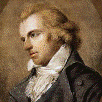Modern Languages and Literatures, Department of
Date of this Version
9-1-2000
Abstract
Kocziszky attempts to explicate the function of the Greek myths in Hölderlin’s late writings, primarily the annotations to his translations of Sophocles’s Oedipus and Antigone. She interprets these myths broadly, and in her discussions explores the figures of the centaur (here her textual basis is “Das Belebende,” Hölderlin’s translation and commentary of one of the Pindaric fragments), Oedipus, Antigone, Danae, and the “Muse,” Greece itself, as tragic figures whose significance emerges as one considers their relationship to the poetological, historical, political, and also profoundly personal concerns expressed in Hölderlin’s work. Following Jean LaPlanche’s observation that poetry and disease share a common discourse in Hölderlin’s work, she is interested in elucidating those paradoxical points of simultaneous creativity and destructiveness in the poet’s writings, in order to speak, provocatively, of the “intellectual failure” (denkerisches Scheitern) of Hölderlin’s poetic enterprise.


Comments
Published in The German Quarterly 73 (2000), pp. 316–318. http://germanquarterly.aatg.org/
Published by the American Association of Teachers of German (AATG), 112 Haddontowne Ct. #104, Cherry Hill, NJ 08034-3668 USA. Copyright © 2000 American Association of Teachers of German. Used by permission.